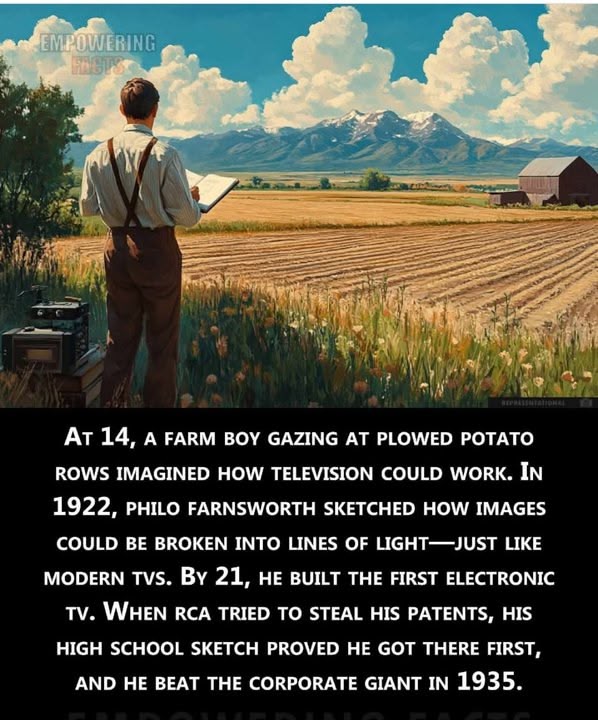The television picture invention
A 14-year-old farm boy named Philo Farnsworth looked out over freshly plowed potato fields and saw something no one else had: a blueprint for the future of television. In 1922, he sketched a system where images could be broken down into lines of light and transmitted electronically—an idea that mirrors exactly how TVs operate today.
By 21, Farnsworth built the first fully functional electronic television. When RCA, the biggest name in radio and technology, tried to steal credit for his invention, Farnsworth’s high school teacher brought out his original sketch as proof. In 1935, the young inventor defeated the corporate giant, securing his place as the true father of television. 📺🚜
Sources: Philo Farnsworth, Television’s Birth: My Story; RCA patent trial records; Smithsonian National Museum of American History
#PhiloFarnsworth #InventionOfTelevision #TechHistory




